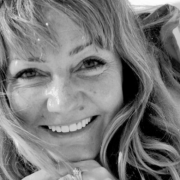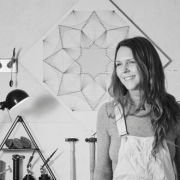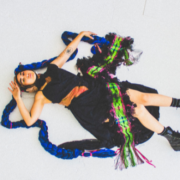Local novelist and travel writer Lucy Lord, first interviewed by West London Living in January 2015, has now extended her repertoire: together she and her brother Nick run Peruvian Arts, a business they set up to showcase the collection of paintings they inherited from their father.
Do you live or work in West London?
I live and work in West London. I live just off Westbourne Grove with my husband and work from home as a writer. I’ve now gone into business with my brother Nick, who lives with his family in Rome. We run Peruvian Arts, which we set up to showcase the collection of paintings we inherited from our father.
What’s your favourite thing about the area?
When I first moved to Notting Hill, I lived just off Portobello Rd and loved the buzz of the area, the numerous bars and restaurants. Ten years on, it’s a ten-minute walk to Hyde Park from where we live, and the older I’ve become, the more I’ve come to appreciate it. I’ve always loved trees and flowers, and ditto bars and restaurants, but the ratio inevitably changes. I’m turning into an old hippy!
I also like the fact of having Portobello market nearby, the sense of community and camaraderie, that people you know smile at you and chat as you buy your fruit and veg. It’s leafy, very friendly and you can walk everywhere.
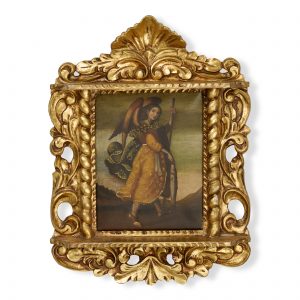
Can you tell us a bit about these paintings? How did your father come by them?
In the late 80s, Dad went on his own for three weeks’ exploration of Peru. When he came back, I remember him being extremely excited that he had, during his travels, found and bought some beautiful and extremely unusual paintings. Over the years, he mounted them on stretchers, framed some of them and had exhibitions all over the world. I’m sure that one of the things that appealed to him the most was the Peruvians’ incredible talent for depicting the natural world – birds, flowers and trees. Also, unlike his children, Dad was brought up as a Catholic, so the religious themes must have resonated hugely with him.
You say these paintings are unusual. Can you tell me why?
They don’t appear anywhere on Instagram or Pinterest, although there is one hanging in Chillingham Castle in Northumbria. I’ve found examples of the Cuzco School in museums around the world, and a couple on sale in galleries in the US, but that’s it.
What is the Cuzco School?
It’s a School of Art founded by two Italian priest-painters, Bernardo Bitti and Angelino Medoro in the mid-16th century in Cuzco. Cuzco had been the capital of the newly-conquered Inca Empire, which was overwhelmed by the forces of Conquistador Francisco Pizarro in 1533. The Spaniards established a Vice-Regency of the Spanish Crown in 1535, which had Lima as its capital: the administrative centre of all their possessions in Central and South America, from Panama to Chile. The cultural capital however continued to be Cuzco, which in the Inca language meant ‘navel’ – that is, of the Empire.
After the conquistadors, many military and religious men came, as well as artists, artisans and farmers. They found that the native peoples had a special aptitude for painting, their subject matter generally being scenes from nature – landscapes, trees, birds and flowers. The newcomers, under Bitti and Medoro, taught them all about the human form and features, also about the Catholic faith. So the Cuzco School, housed in the Theological College of San Antonio, started producing paintings of exclusively religious themes, executed in a mixture of the two styles – local naivety and European sophistication: a kind of cultural syncretism.
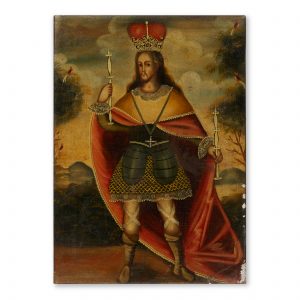
What were the Cuzco School’s main influences?
Initially the Italian Renaissance and Flemish-Sevillian Schools. After that, it took inspiration from artists such as Caravaggio, Zurbaran, Murillo and Rubens. It has continued, almost uninterrupted to the present, from the mid-16th century to now, in the manner of icon painting in Greece and Russia.
Can you describe the style of the paintings in your collection?
They’re all original oil paintings, mainly executed on canvas, but with three little ones on copper. They’re quite stylised, representing angels and archangels, Madonnas, saints and scenes from the Bible. There are also some secular works, mainly portraits of noblemen or their offspring. Many of the costumes worn by the figures in the paintings are representations of the wonderfully opulent and glittering dress of the Spanish Court at that time: intricate lace and embroidery, richly coloured and voluminous layers of silks and velvets. An unusual feature is that many of the angels are shown as defenders of the Eucharist, bearing the latest weaponry such as arquebusses and blunderbusses. Angels with guns – this may not chime exactly with modern sensibilities but certainly provides a talking point!
The paintings are also characterised by the delicacy and finesse of the facial features, the sweetness – and in a couple of cases, the humour – of the expressions. Many of them are exquisitely lovely, with skilful brushwork and gorgeous colours – have a look at the link at the bottom of this interview to see for yourself.
Have you travelled to Central or South America yourself?
I’ve done a bit of travelling, but nothing like in the same league as Dad, who was in the travel business most of his life, and a Fellow of the Royal Geographical Society. In the 90s I went to Venezuela with my then-boyfriend. We had a week climbing in the Venezuelan Andes – based at Merida, which is 1,600m above sea level. That was pretty hairy! We were camping and very close to the Equator so it got dark pretty suddenly and we were caught out a couple of times trying to pitch the tent on a steep slope in absolute blackness, with only one torch for illumination – I’ve no idea why we didn’t have one each. We were climbing through cloud forest, so there was an amazing variety of birdlife, which disappeared altogether once we emerged above the clouds. We spent another week in backpacker hostels on the Caribbean coast, which was great fun for totally different reasons!
And my husband and I went to Tulum in Mexico about 10 years ago. It was totally beautiful and we did see some culture – the Aztec ruins at Chichen Itza. Mainly though the holiday involved drinking and eating delicious Mexican food on the beach, to be scrupulously honest!
Am I tempted to go to Peru now? Yes, totally. The Pacific Coast is next on my agenda.
Where is your favourite place in the world?
When you asked me this before I said Ibiza, and while I still love the Balearics, ten years on I prefer the slightly quieter pace of Palolem Beach, in south Goa. While the north of Goa is all about raving and fluorescent-painted palm trees, and central is high rises and package tours, the south still retains a wonderfully sleepy vibe. Palolem means Paradise, and that’s exactly what it is: beach huts on a crescent of golden sand backed by swaying palm trees. You never wear shoes, only flip-flops when it’s too hot to walk on the sand, and the most arduous decision you’ll ever have to make is whether to have a coconut pancake or a spicy Indian omelette for breakfast.
Who knows, the next time somebody asks me this question, the answer may well be the Peruvian Pacific Coast – ‘where the desert meets the sea.’
What’s your favourite place to eat in West London?
The Princess Royal is a one-minute walk from our flat, and an absolutely fantastic pub, serving delicious modern British stuff – great for fish. It also has a beautiful walled garden that is fabulous in summer. Ci Tua on Portobello Road is great for Italian food and also has a (tiny) walled garden. When we first moved to the area, the Market Thai was our local, and it’s still a favourite for very reasonably priced authentic Thai food. Everybody who works there is very friendly and it’s beautifully decorated. Oh and I can’t leave out Durbar, which is just downstairs from our flat. It’s a seriously yummy Tandoori restaurant that’s been here since the 50s – sometimes it’s dangerous to have such a good takeaway practically on your doorstep.
On my list to try is Chicama in the King’s Road. It looks and sounds great fun, with deep Latin beats, intriguing Peruvian fish dishes and Pisco sours to drink, which I know from years of going to Dad’s exhibitions are delicious but absolutely lethal!
What’s next for Peruvian Arts?
We’re planning an exhibition somewhere in West London in spring 2024 – watch this space for details, or check the News page on our website.
Do you have anything else to say to potential Peruvian Arts customers?
For a really special Christmas present for a loved one, why not invest in an original and highly decorative oil painting?


